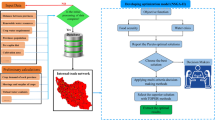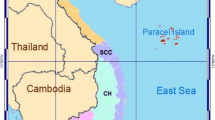Abstract
Sustainable food security is one of the policy-making targets in Iran, but water scarcity has always been a challenge to its actualization. Regarding this point, offering policies to address this challenge is essential. On the other hand, wheat is the most important commodity in the food baskets of Iranians, and due to the lack of equality in the supply and demand among the regions, a large amount of wheat is displaced every year. The displacement of wheat has resulted in virtual water trade among the regions and could be a possible solution to manage the water crisis in Iran. With respect to the necessity of research, the present study investigated the effects of economic policies on virtual water trade for wheat using a spatial equilibrium model. Therefore, the aim of this study was to investigate the pattern of virtual water trade flow and welfare changes which resulted from making different economic policies in the wheat market. The results showed that the wheat self-sufficiency policy reduces the total amount of virtual water trade, and will increase pressure on the water resources of Iran. The policy of paying tax and receiving subsidies also significantly affect the flow of virtual water trade. But that happens best when tax revenues are equal to the payment of subsidies.


Similar content being viewed by others
References
Ababaei B, Ramezani Etedali H (2017) Water footprint assessment of main cereals in Iran. Agric Water Manag 179:401–414. https://doi.org/10.1016/j.agwat.2016.07.016
Abbasian AR, Chizari M, Bijani M (2017) Farmers’ views on the factors inhibiting the implementation of soil conservation practices (the case of Koohdasht township, Iran). J Agric Sci Technol 19(4):797–807
Allan JA (1997) Virtual water: A long term solution for water short Middle Eastern economies? Paper presented at the 1997 British Association Festival of Science. University of Lecds, 9 September 1997
Allan JA (2003) Virtual water eliminates water wars? A case study from the Middle East; Proceeding of the international export meeting on virtual water trade. Value of water research report series, p. NO.12
Allevi E, Gnudi A, Konnov IV, Oggioni G (2017) Dynamic spatial auction market models with general cost mappings. Netw Spat Econ 17(2):367–403. https://doi.org/10.1007/s11067-016-9330-1
Antonelli M, Roson R, Sartori R, Sartori M (2012) Systemic input-output computation of green and blue virtual water flows with an illustration for the Mediterranean region. Water Resour Manag 26(14):4133–4146. https://doi.org/10.1007/s11269-012-0135-9
Arndt CH, Schiller R, Tarp F (2001) Grain transport and rural credit in Mozambique: solving the space–time problem. Agric Econ 25(1):59–70. https://doi.org/10.1016/S0169-5150(00)00084-0
Azamzadeh Shouraki M, Khalilian S, Mortazavi SA (2013) Effects of declining energy subsidies on value added in agricultural sector. J Agric Sci Technol 15(3):423–433
Bae J, Dall'erba S (2016) An Input-Output Analysis of Arizona's Virtual Water Trade, paper presented at the 63rd Annual North American Meetings of the Regional Science Association International
Barbero J, Zofío JL (2016) The multiregional Core-periphery model: the role of the spatial topology. Netw Spat Econ 16(2):469–496. https://doi.org/10.1007/s11067-015-9285-7
Batabyal AA, Nijkamp P (2014) Innovation, decentralization and planning in a multi-region model of Schumpeterian economic growth. Netw Spat Econ 14(3–4):605–628. https://doi.org/10.1007/s11067-014-9258-2
Chapagain AK, Hoekstra AY (2003) Virtual water trade: A quantification of virtual water flows between nations in relation to international trade of livestock and livestock products. proceeding of the international export meeting on virtual water trade, value of water research report series, p. No.12
Chapagain AK, Hoekstra AY, Savenije HHG (2005) Saving water through global trade, value of water research report series no. 17, UNESCO-IHE, delft, the Netherlands
Deng G, Wang L, Song Y (2015) Effect of variation of water-use efficiency on structure of virtual water trade - analysis based on input–output model. Water Resour Manag 29(8):2947–2965. https://doi.org/10.1007/s11269-015-0980-4
Devadoss S, Aguiar AH, Shook SR, Araji J (2005) A spatial equilibrium analysis of U.S.–Canadian disputes on the world softwood lumber market. Can J Agric Econ 53(2-3):177–192. https://doi.org/10.1111/j.1744-7976.2005.04024.x
Dietzenbacher E, Velázquez E (2007) Analyzing Andalusian virtual water trade in aninput–output framework. Reg Stud 41(2):185–196
El-Sadek A (2010) Virtual water trade as a solution for water scarcity in Egypt. Water Resour Manag 24(11):2437–2448. https://doi.org/10.1007/s11269-009-9560-9
Feng K, Ling Siu Y, Guan D, Hubacek K (2012) Assessing regional virtual water flows and water footprints in the Yellow River basin, China: a consumption based approach. Appl Geogr 32(2):691–701. https://doi.org/10.1016/j.apgeog.2011.08.004
Garcia JR, Randall A (1994) A cost function analysis to estimate the effects of fertilizer policy on the supply of wheat and corn. Rev Agric Econ 16(2):215–230. https://doi.org/10.2307/1349464
Han M, Guo S, Chen H, Ji X, Li J (2014) Local-scale systems input-output analysis of embodied water for the Beijing economy in 2007. Front Earth Sci 8(3):414–426. https://doi.org/10.1007/s11707-014-0430-2
Han K, Yao T, Jiang C, Friesz TL (2017) Lagrangian-based hydrodynamic model for traffic data fusion on freeways. Netw Spat Econ 17(4):1071–1094. https://doi.org/10.1007/s11067-017-9380-z
Hoekstra AY (2003) Virtual water trade: proceedings of the international expert meeting on virtual water trade, delft the Netherlands, 12–13 December 2002, value of water research report series No12, UNESCO-IHE, delft the Netherlands (2003)
Hoekstra AY, Hung PQ (2003) Virtual water trade: a quantification of virtual water flows in relation to crop trade’ proceeding of the international expert meeting on virtual water trade, edited by Hoekstra AY, February 2003, value of water research report series no.12
Huang XR, Pei YS, Liang C (2005) Input-output method for calculating the virtual water trading in Ningxia. Adv Water Sci 27(3):135–139
Khalilian S, Shemshadi K, Mortazavi S, Ahmadian M (2014) Investigation the welfare effects of climate change on wheat in Iran. J Agric Econ Dev 28(3):292–300 (In persian)
Lederer PJ (2003) Competitive delivered spatial pricing. Netw Spat Econ 3(4):421–439. https://doi.org/10.1023/A:1027357904245
Leuthold FU, Weigt H, Von Hirschhausen C (2012) A large-scale spatial optimization model of the European electricity market. Netw Spat Econ 12(1):75–107. https://doi.org/10.1007/s11067-010-9148-1
Liu J, Wu P, Wang Y, Zhao X, Sun S, Cao X (2015) Virtual water flows related to grain crop trade and their influencing factors in Hetao Irrigation District in China. J Agric Sci Technol 17:201–211
Manjezi S, Ghobadi S, Efgheh M (2011) Short run and long run effects of trade liberalization on import of wheat in Iran. J Agric Econ Dev 24(4):526–532 (In persianPersian)
McCarl BA, Spreen TH (1996) Applied Mathematical Programming Using Algebraic Systems." Dept. of Agr. Econ., Texas A&M University. Online. Available at http://agecon.tamu.edu/faculty/mccarl
Mesa-Arango R, Narayanan B, Ukkusuri SV (2017) The impact of international crises on maritime transportation based global value chains. Netw Spat Econ, https://doi.org/10.1007/s11067-017-9377-7
Modica M, Reggiani A (2015) Spatial economic resilience: overview and perspectives. Netw Spat Econ 15(2):211–213. https://doi.org/10.1007/s11067-014-9261-7
Mosavi SH (2014) Positive agricultural and food trade model with ad valorem tariffs. J Agric Sci Technol 16:1481–1492
Mosavi SH (2016) Energy price reform and food markets: the case of bread supply chain in Iran. Agric Econ 47(2):169–179. https://doi.org/10.1111/agec.12192
Murad KA, Gaese H, Jabarin AS (2010) Economic value of tree fruit production in Jordan valley from a virtual water perspective. Water Resour Manag 24(10):2021–2034. https://doi.org/10.1007/s11269-009-9536-9
Najafi Alamdarlo H (2016a) Spatial and temporal factors affecting agricultural trade in the European Union (EU) and economic cooperation organization (ECO). J Agric Sci Technol 18:1721–1733
Najafi Alamdarlo H (2016b) Water consumption, agriculture value added and carbon dioxide emission in Iran, environmental Kuznets curve hypothesis. Int J Environ Sci Technol 13(8):2079–2090. https://doi.org/10.1007/s13762-016-1005-4
Najafi Alamdarlo H (2018) The economic impact of agricultural pollutions in Iran, spatial distance function approach. Sci Total Environ 616-617:1656–1663. https://doi.org/10.1016/j.scitotenv.2017.10.146
Najafi Alamdarlo H, Ahmadian M, Khalilian S (2016) Groundwater management at varamin plain: the consideration of stochastic and environmental effects. Int J Environ Res 10(1):21–30
Reggiani A, De Graaff T, Nijkamp P (2002) Resilience: an evolutionary approach to spatial economic systems. Netw Spat Econ 2(2):211–229. https://doi.org/10.1023/A:1015377515690
Robson E, Dixit VV (2017) A general equilibrium framework for integrated assessment of transport and economic impacts. Netw Spat Econ 17(3):989–1013. https://doi.org/10.1007/s11067-017-9356-z
Salehi S, Chizari M, Sadighi H, Bijani M (2017) Assessment of agricultural groundwater users in Iran: a cultural environmental bias. Hydrogeol J, https://doi.org/10.1007/s10040-017-1634-9
Samuelson PA (1952) Spatial price equilibrium and linear programming. Am Econ Rev 3:283–303
Shi J, Liu J, Pinter AL (2014) Recent evolution of China’s virtual water trade: analysis of selected crops and considerations for policy. Hydrol Earth Syst Sci 18(4):1349–1357. https://doi.org/10.5194/hess-18-1349-2014
Smaktin V, Revenga C, Doll P (2004) Taking into account Environmental Water Requirements in global scale water Resources Assessments. Comprehensive Assessment of water management in agriculture Research Report 2, IWMI, Colombo, Sri Lanka
Stępniak M, Rosik P (2017) The role of transport and population components in change in accessibility: the influence of the distance decay parameter. Netw Spat Econ. https://doi.org/10.1007/s11067-017-9376-8
Su X, Li J, Singh VP (2014) Optimal allocation of agricultural water resources based on virtual water subdivision in Shiyang River basin. Water Resour Manag 28(8):2243–2257. https://doi.org/10.1007/s11269-014-0611-5
Takayama T, Judge GG (1964) Spatial equilibrium and quadratic programming. J Farm Econ 46(1):67–93. https://doi.org/10.2307/1236473
Wichelns D (2001) The role of “virtual water” in efforts to acheiveachieve food security and other national goals, with an example from Egypt. Agric Water Manag 49(2):131–151. https://doi.org/10.1016/S0378-3774(00)00134-7
Yaffee R (2003) A primer for panel data analysis, New York University, Information Technology Servises
Yang H, Reichert P, Abbaspour K, Zehner AJB (2003) A water resources threshold and its implications for food security. Environ Sci Technol 37(14):3048–3054. https://doi.org/10.1021/es0263689
Author information
Authors and Affiliations
Corresponding author
Rights and permissions
About this article
Cite this article
Najafi Alamdarlo, H., Riyahi, F. & Vakilpoor, M.H. Wheat Self-Sufficiency, Water Restriction and Virtual Water Trade in Iran. Netw Spat Econ 19, 503–520 (2019). https://doi.org/10.1007/s11067-018-9383-4
Published:
Issue Date:
DOI: https://doi.org/10.1007/s11067-018-9383-4




